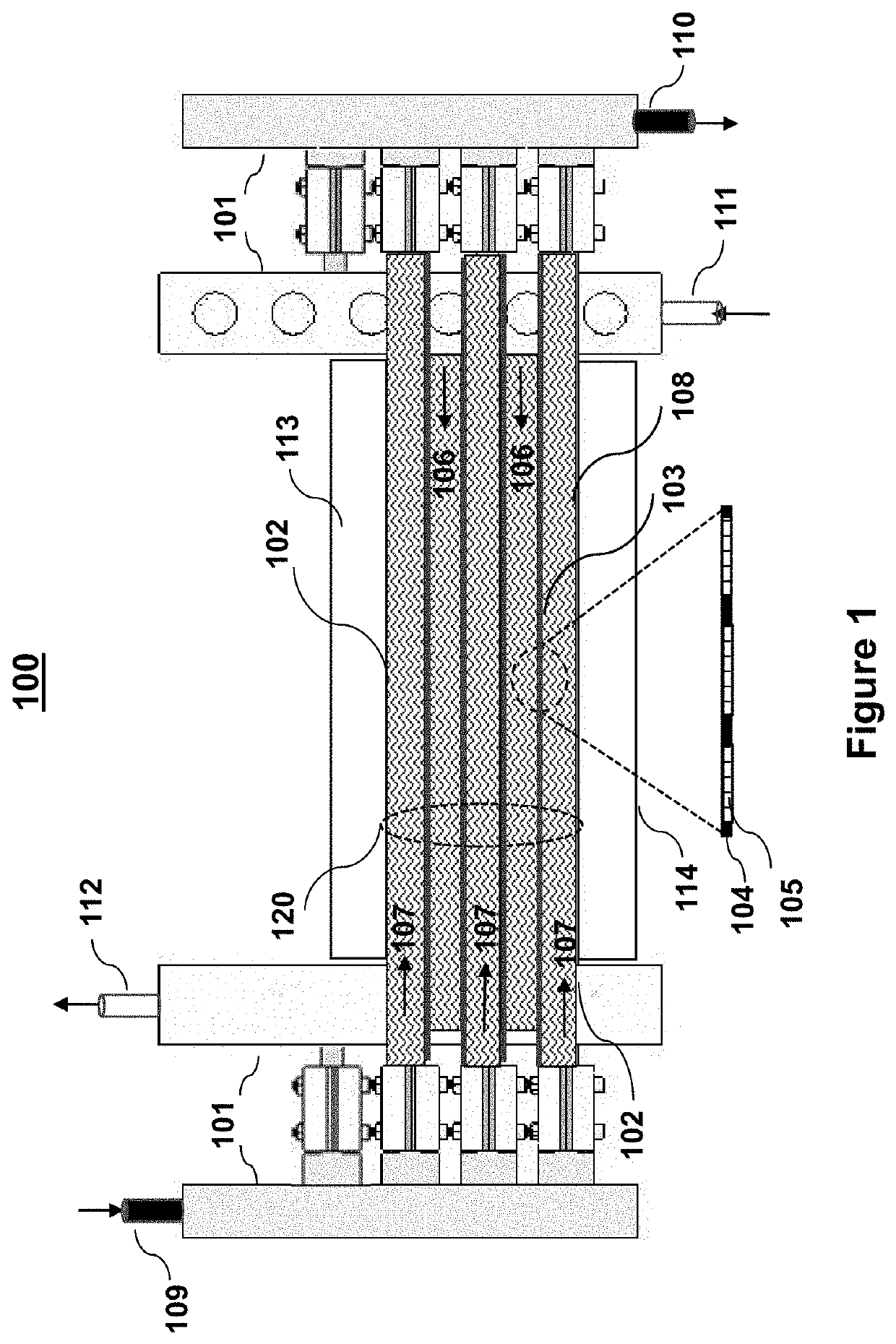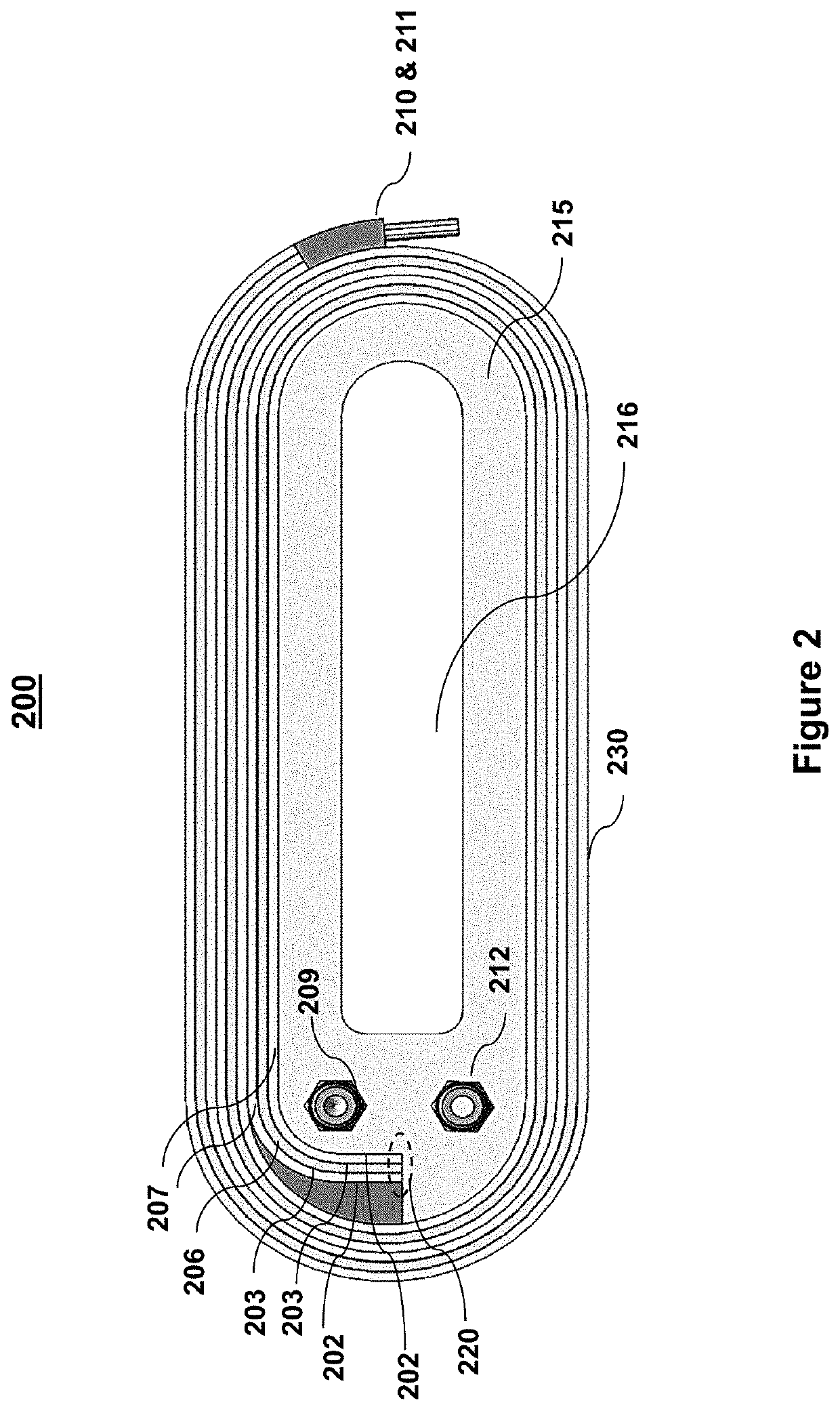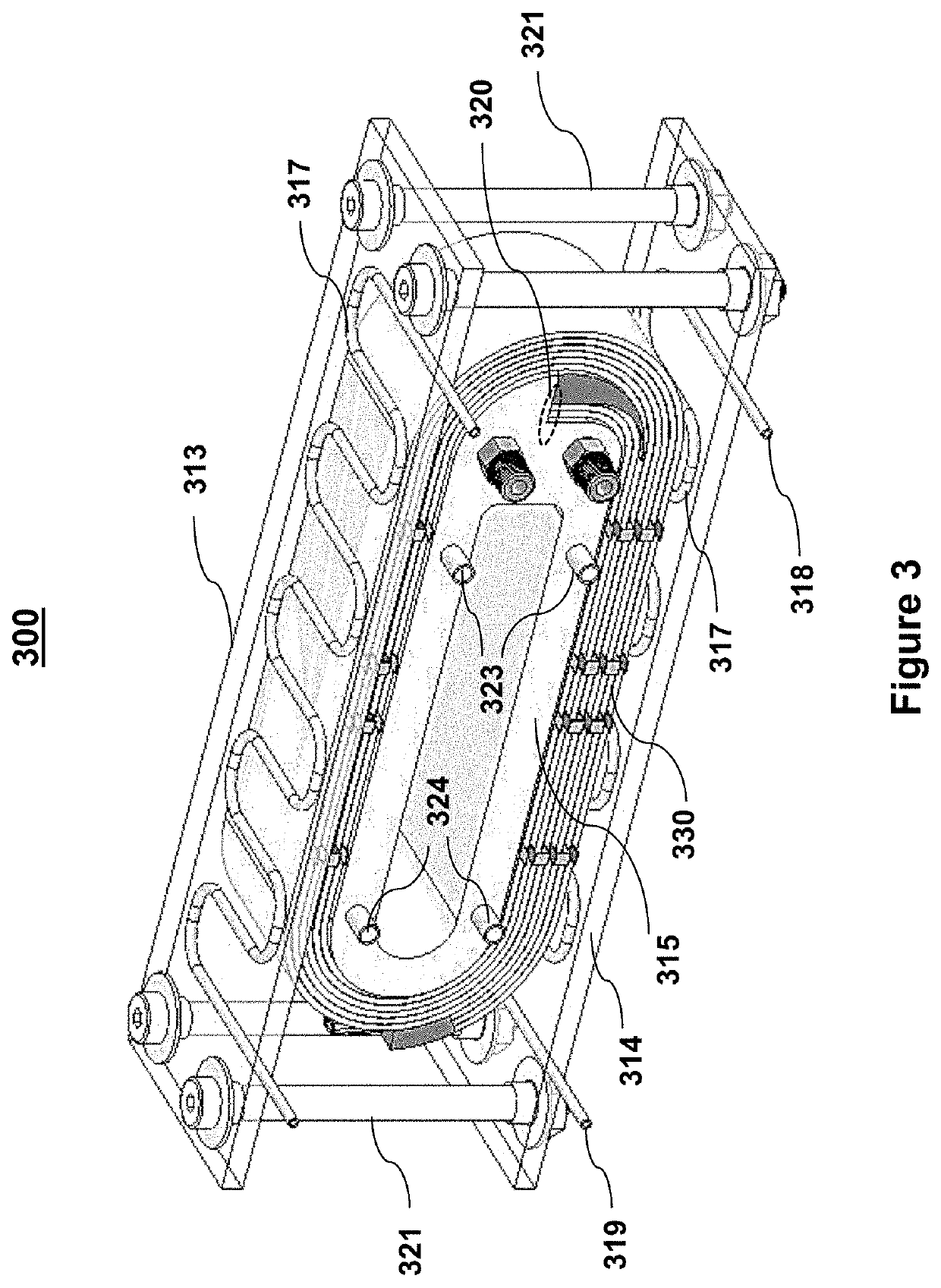Stackable Fuel Cell
a fuel cell and stack technology, applied in the field of stackable fuel cells, can solve the problems of less practical stacks for applications where portability is desired, more fuel cell units, and uneven distribution of reacting fluids (fuel, reactant, or both) throughout the volume of stacks, and achieves easy transportability, high output power, and low weight
- Summary
- Abstract
- Description
- Claims
- Application Information
AI Technical Summary
Benefits of technology
Problems solved by technology
Method used
Image
Examples
Embodiment Construction
[0038]Principles of the invention are explained using the following description in the context of the figures of the drawings. Identical elements and elements providing similar functionality in the figures are represented by same reference numerals in various schematic views as much as possible. Different drawing figures focus on one or more different concepts of the invention. If an element is not shown or labelled in any particular drawing figure for clarity and ease of illustration, it is not be construed as precluded from the embodiment, unless stated otherwise. Different features shown in different embodiments of the invention may be practiced alone, or in a desirable combination to utilize the full scope of the invention.
[0039]By way of example and not as a limitation, the basic concepts of the invention are illustrated using a most common Proton Exchange Membrane (PEM) fuel cell. In one embodiment of the invention shown in FIG. 1, a schematic cross-sectional view 100 of the f...
PUM
| Property | Measurement | Unit |
|---|---|---|
| polarity | aaaaa | aaaaa |
| electrical polarity | aaaaa | aaaaa |
| semi-permeable | aaaaa | aaaaa |
Abstract
Description
Claims
Application Information
 Login to View More
Login to View More - R&D
- Intellectual Property
- Life Sciences
- Materials
- Tech Scout
- Unparalleled Data Quality
- Higher Quality Content
- 60% Fewer Hallucinations
Browse by: Latest US Patents, China's latest patents, Technical Efficacy Thesaurus, Application Domain, Technology Topic, Popular Technical Reports.
© 2025 PatSnap. All rights reserved.Legal|Privacy policy|Modern Slavery Act Transparency Statement|Sitemap|About US| Contact US: help@patsnap.com



